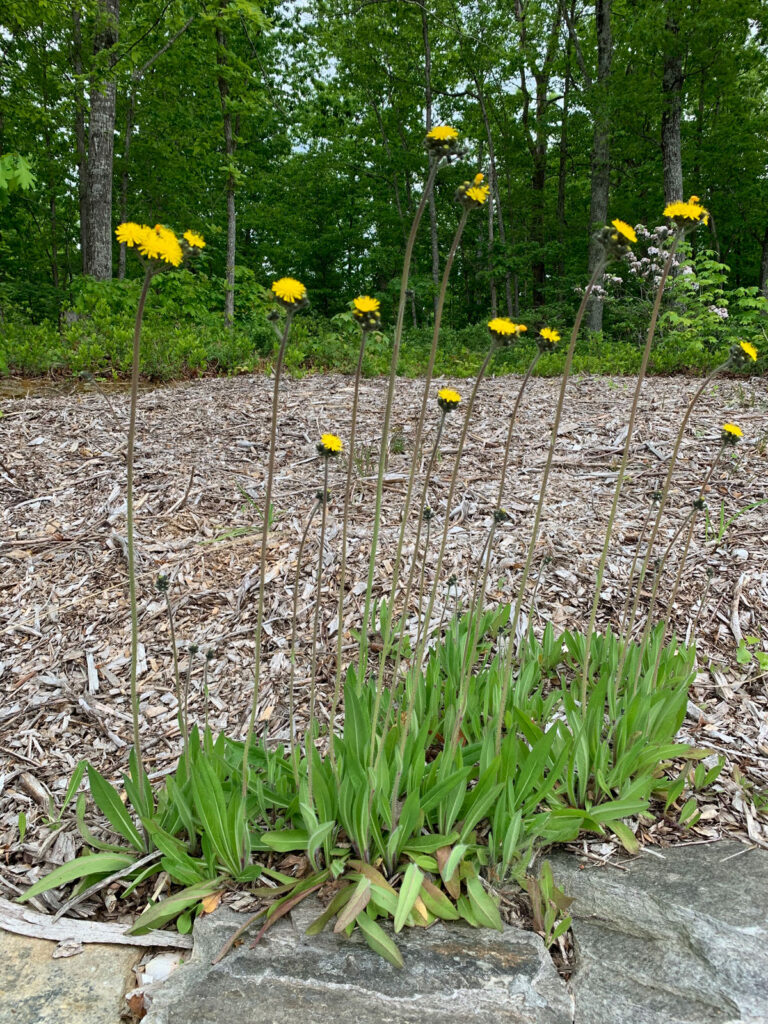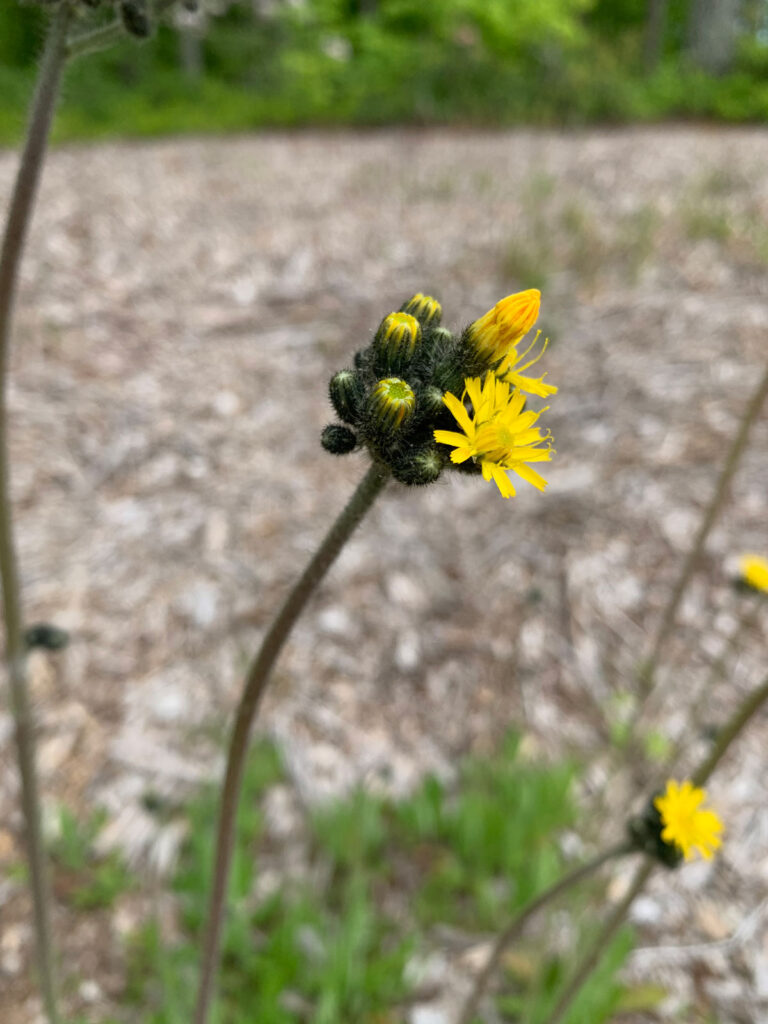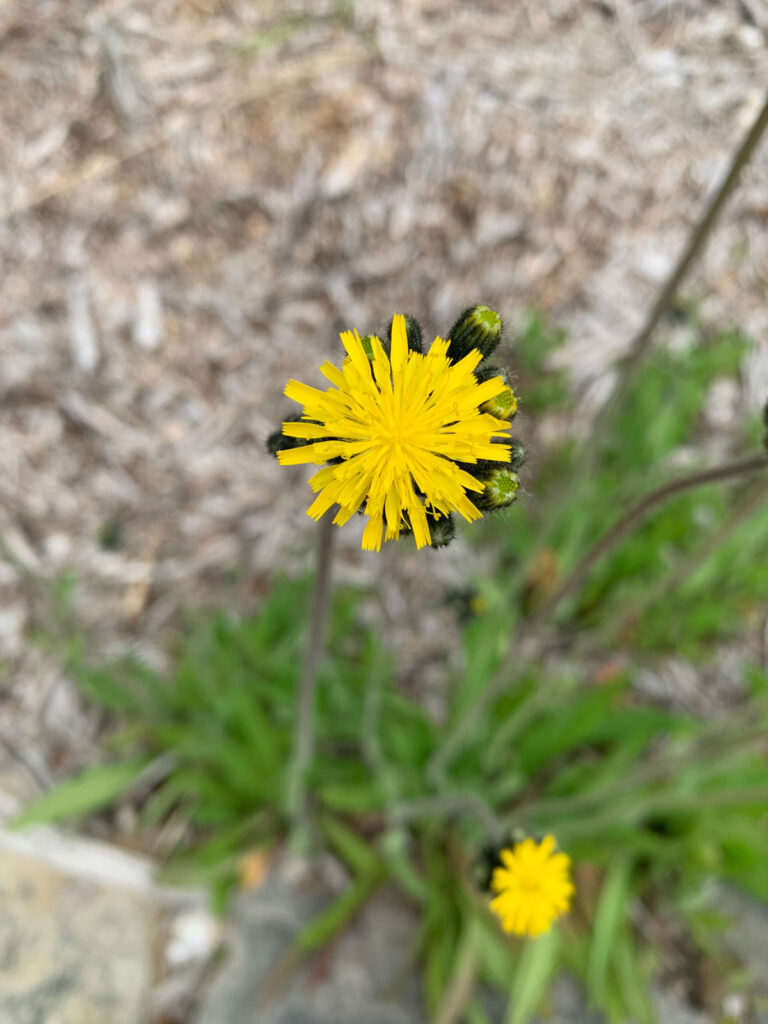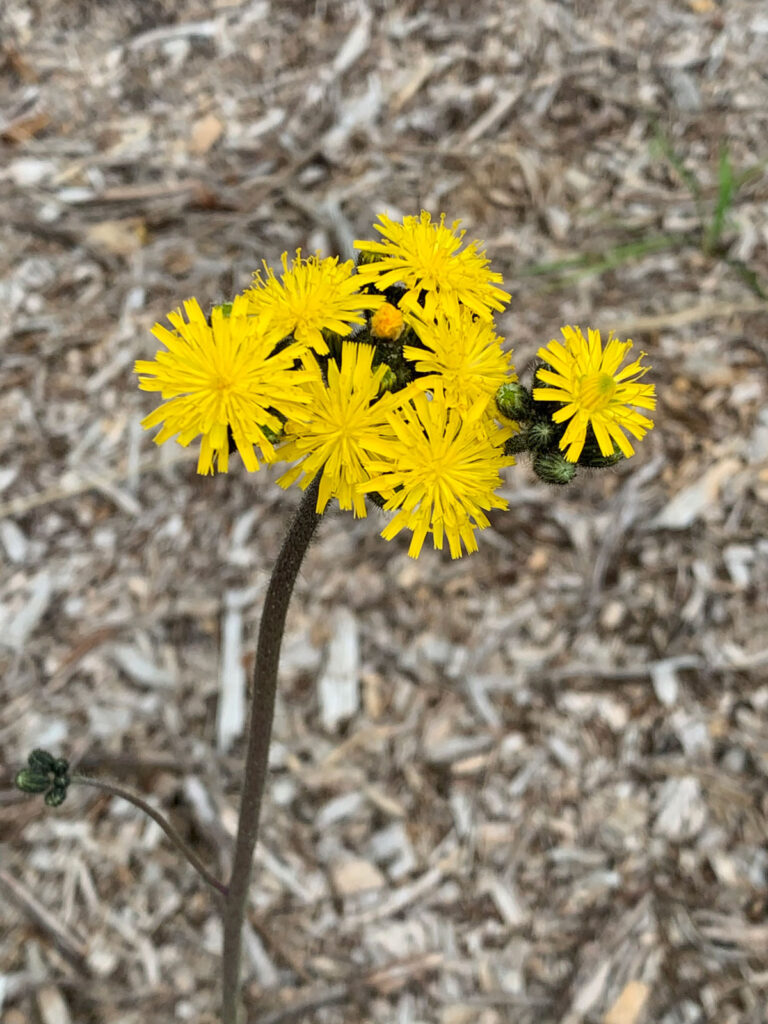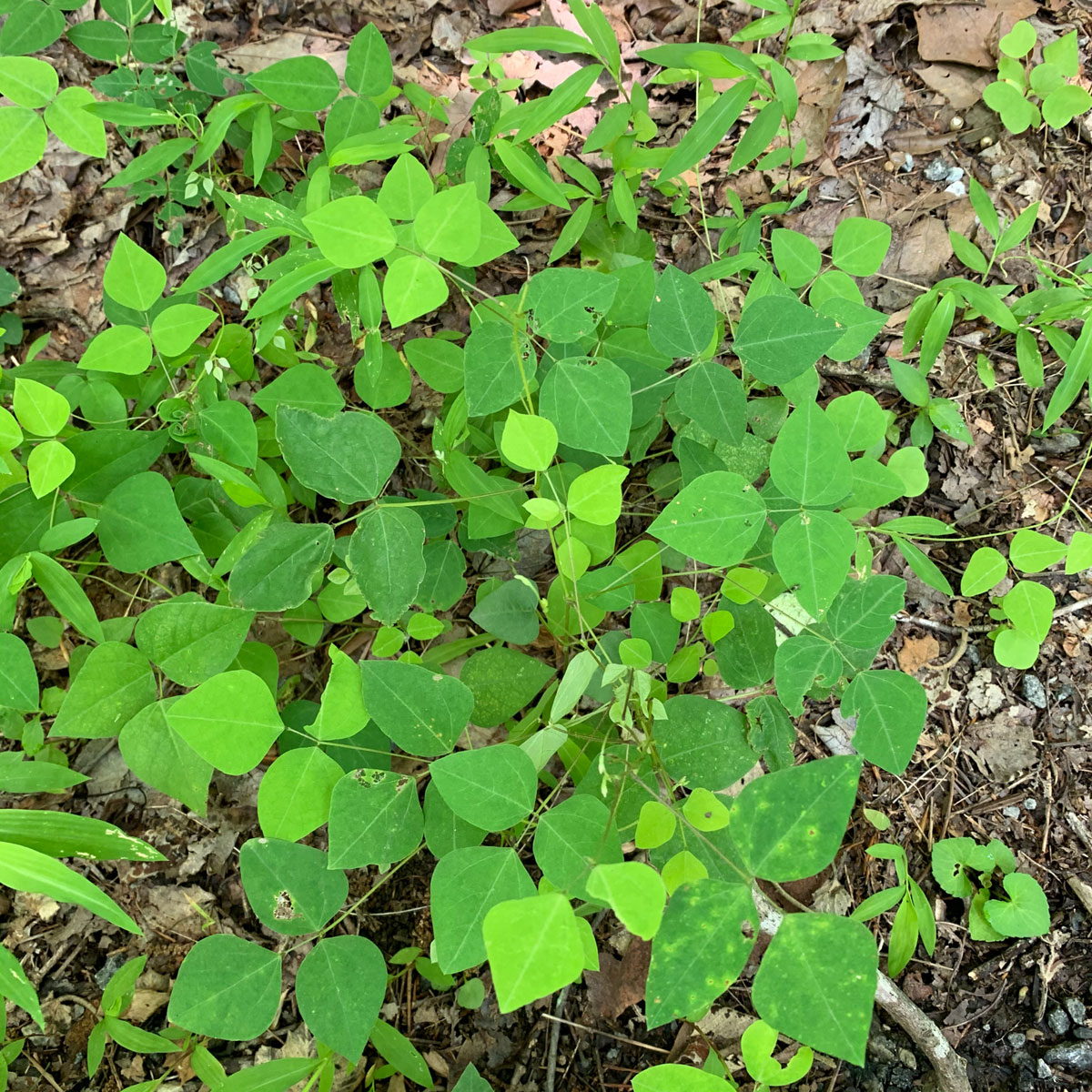UNFORTUNATELY this invasive sprang up in some woodchips I had gotten. After identifying it from the photos, I promptly set up to start pulling it out every season.
It spreads by rhizomes, seeds and creeping along, forming mats, and it notoriously difficult to control. It eventually crowds out all other species.
Not only that, Yellow Hawkweed is “one of only 6 known Pollen Allelopathic plants. The pollen released from its flowers discharges toxins that inhibit the seed germination, seedling emergence, and saprophytic growth of surrounding plants.” Now THAT’S NOT COOL, Hawkweed, NOT COOL.
Survey says: ERADICATE! ERADICATE!
Alternate Name: Kill Devil Size: Up to 3 feet tall Family: Asteraceae (Aster Family) Habitat: Prefers silt loam, well-drained soil: coarse textures, moderately low in organic matter, and moist. As many invasives are, this species is tolerant of drought, trampling, and likes areas where the soil is poor or been neglected, like roadsides, vacant lots, dump sites, parks and open spaces. Identification: "Yellow hawkweed has clusters of many small, yellow dandelion-like flower heads on top of mostly leafless stems. The erect, bristly stems can grow up to 3 feet tall, each topped by 5 to 30 bright yellow flower heads in a compact, flat-topped cluster. Each plant produces 10 to 30 flower stems. Flowers in bud are distinctively rounded and black-hairy in tight clusters at the tops of the stems. The leaves are long and narrow, up to six inches long, not lobed, somewhat hairy on both sides, and form a basal rosette. There are also usually one or two small leaves on the stem. The entire plant contains a milky juice."






